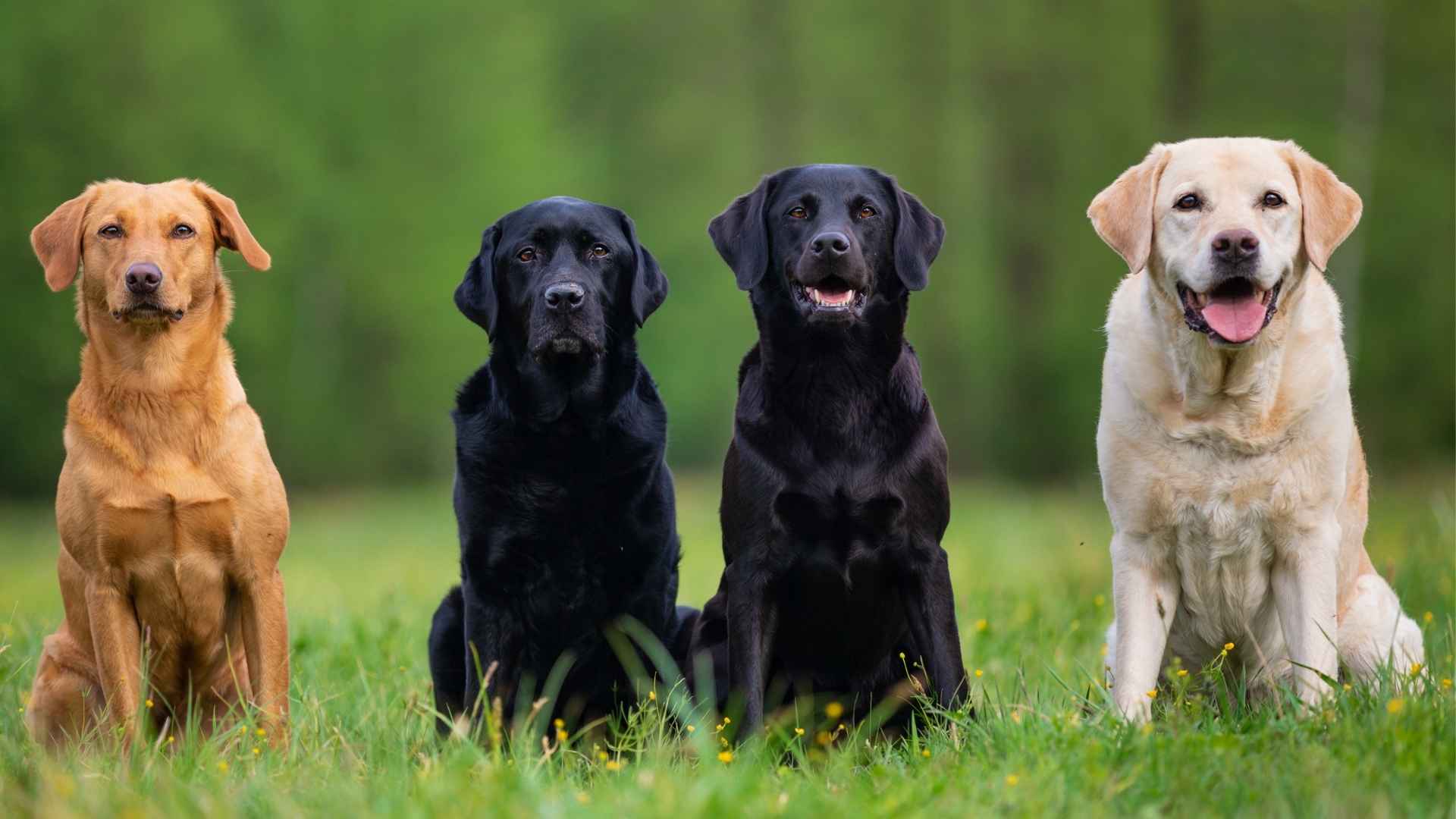Retriever dogs are among the most reliable and hardworking breeds, excelling in everything from hunting to search-and-rescue missions. But beyond their skills, they are also loyal, intelligent, and highly trainable, making them a top choice for families and professionals alike. Whether you need an energetic companion for outdoor adventures or a disciplined working dog, retrievers have a breed suited for your needs.
Many people assume that all retrievers are the same, but each breed has its unique strengths, temperament, and care requirements. Some thrive in water, while others excel in tracking or obedience training. Understanding these differences can help you choose the right retriever for your lifestyle, ensuring a perfect fit for you and your dog.
With six distinct retriever breeds, this guide will break down their key traits, training needs, and what sets each apart. Whether you’re looking for a loyal hunting partner or an active family pet, one of these breeds is sure to match your expectations.
6 Types of Retrievers Dog Breeds
1. Chesapeake Bay Retriever
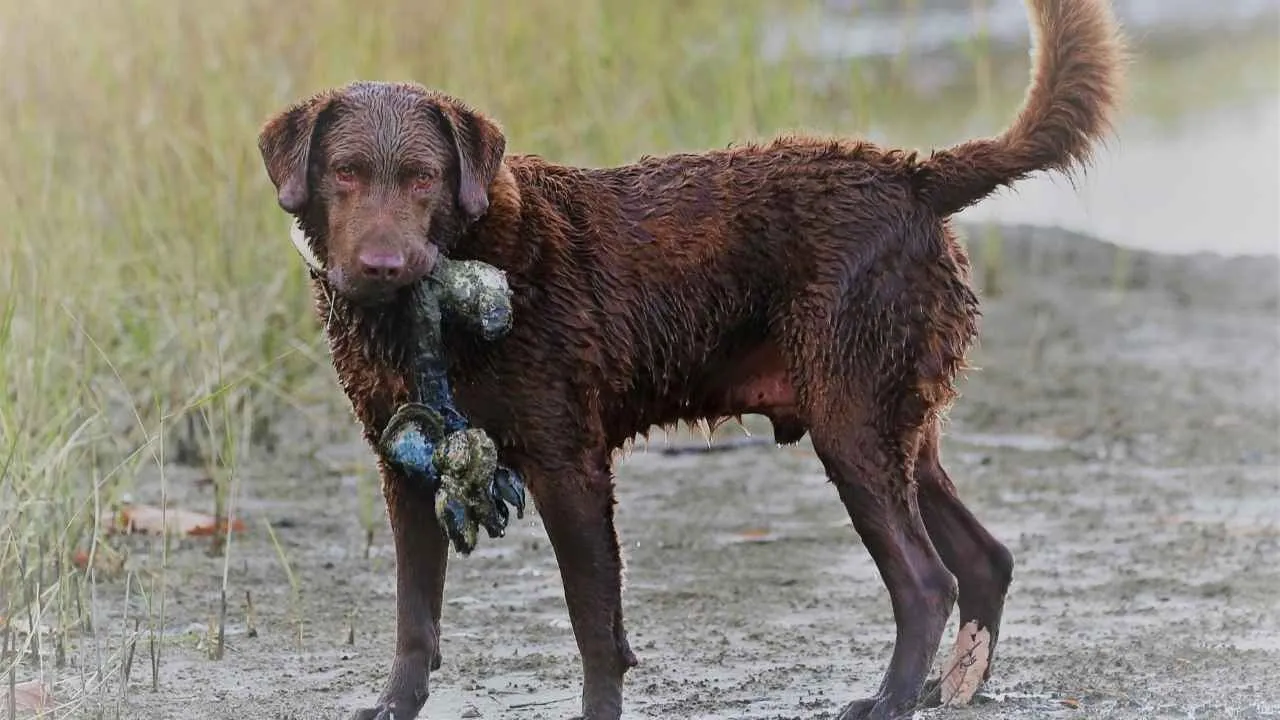
The Chesapeake Bay Retriever is a rugged, determined retriever built for tough conditions. Originating from the Chesapeake Bay, it excels in retrieving waterfowl in icy waters. With a dense, waterproof coat and powerful build, it thrives in challenging environments.
As per the AKC, this breed possesses unmatched endurance and resilience, making it ideal for outdoor work. Its coat features natural oils that repel water, helping it stay warm. Chessies are known for their intelligence and problem-solving skills, allowing them to adapt to various tasks effortlessly.
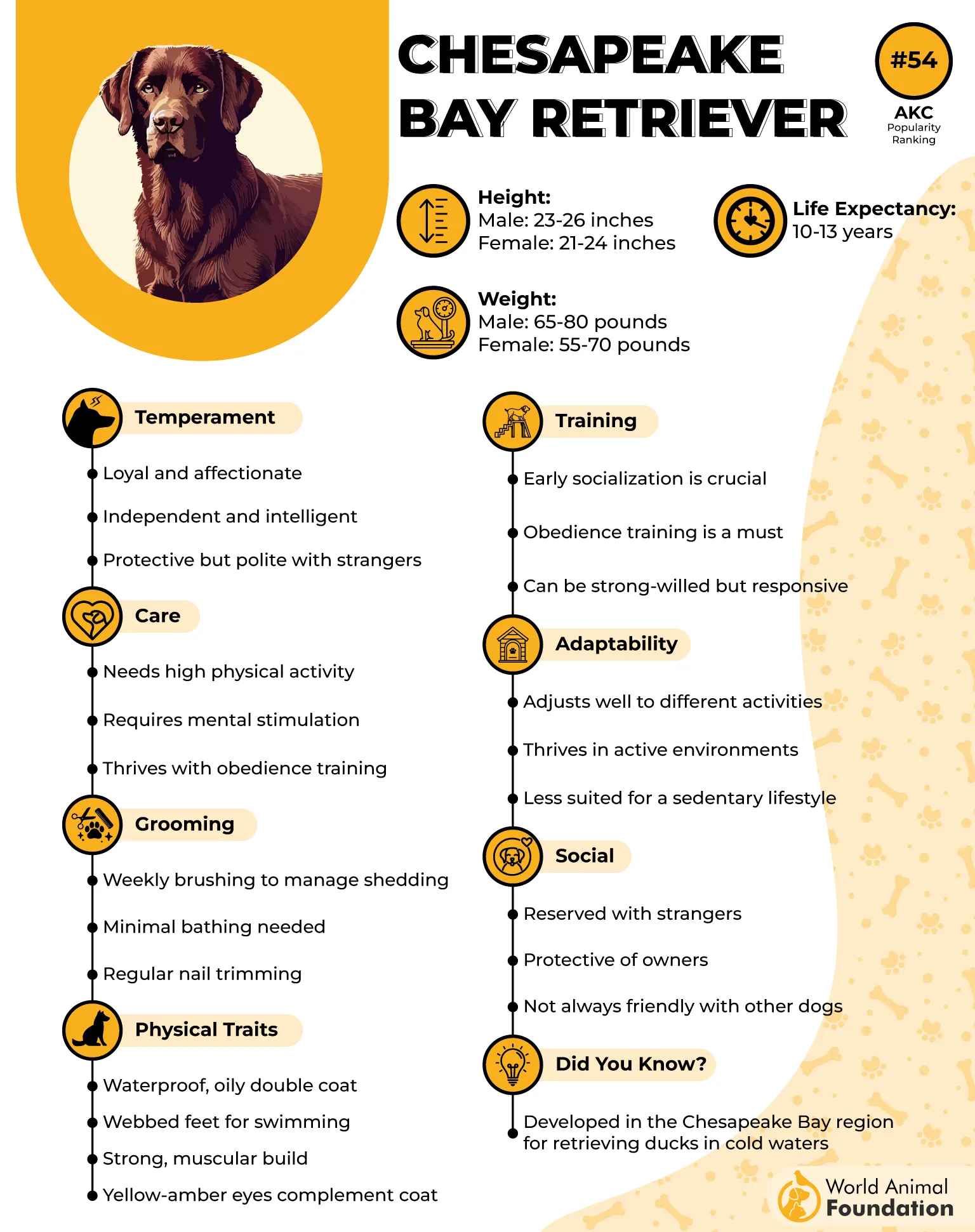
Despite their hardworking nature, they require firm training. Early socialization is crucial to ensure they develop a well-balanced temperament. Their protective instincts can be strong, making them excellent watchdogs. Consistency and positive reinforcement yield the best training results.
Their activity level demands regular mental and physical stimulation. Daily runs, swimming sessions, and advanced obedience exercises keep them engaged. Without proper exercise, they may develop destructive habits. Owners must provide ample outlets for their energy and intelligence.
Grooming is relatively low-maintenance. Their short, wavy coat sheds moderately and benefits from weekly brushing. Bathing should be minimal to preserve the coat’s natural oils. Regular ear cleaning is essential, especially after swimming, to prevent infections.
Fun Fact
The Chesapeake Bay Retriever was developed from shipwrecked Newfoundland dogs and local retrievers, giving them their distinct blend of strength, endurance, and water-resistant coats.
2. Curly-Coated Retriever
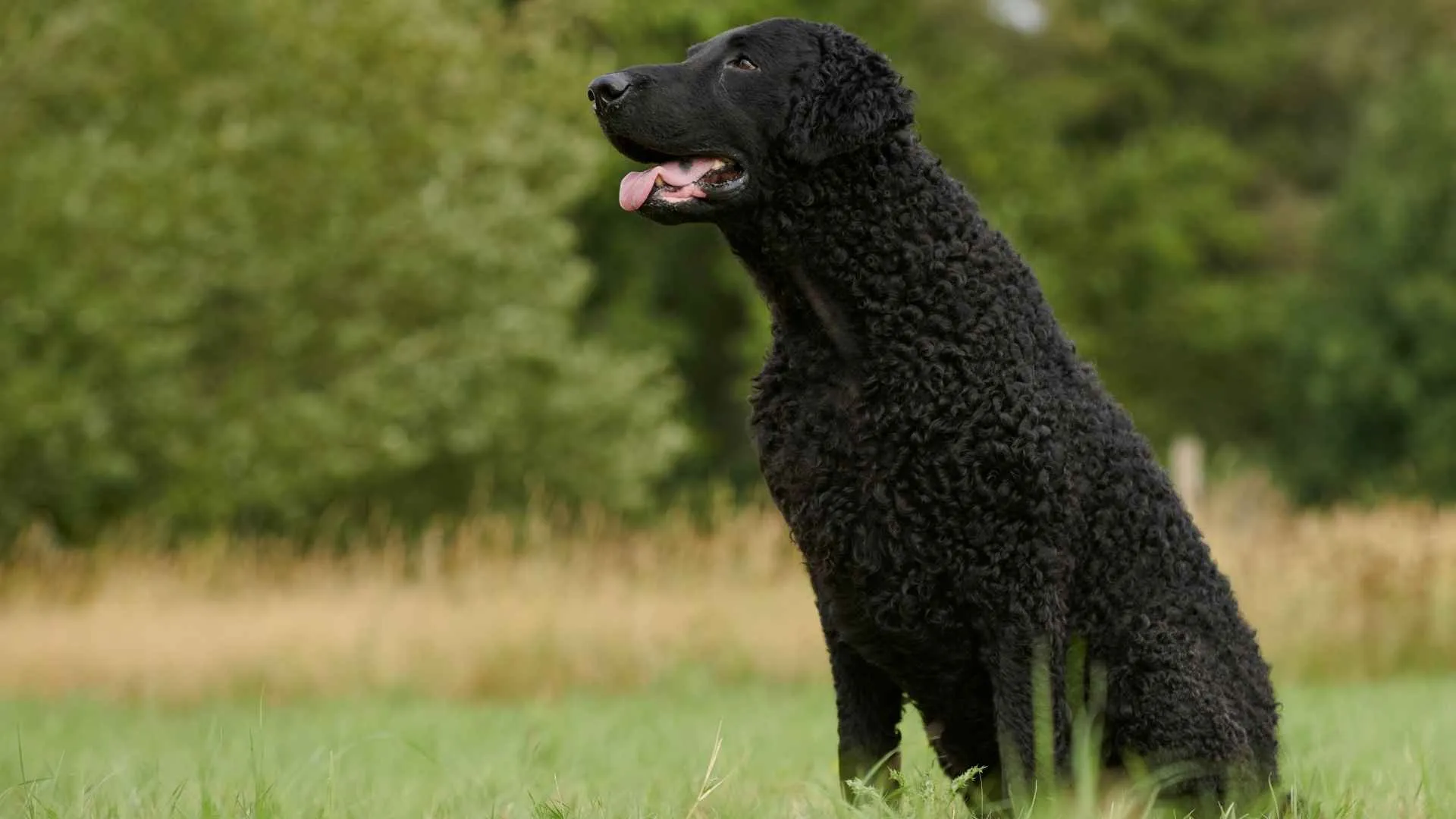
The Curly-Coated Retriever stands out with its unique, tightly curled coat that shields it from harsh weather. Originally bred for retrieving game on land and water, this breed combines elegance with toughness. Its history dates back to the 18th century.
Highly independent, this retriever has a confident and sometimes aloof demeanor. It thrives on problem-solving and excels in advanced obedience. Training should begin early, focusing on mental engagement. Reward-based methods work best as they respond well to positive reinforcement.
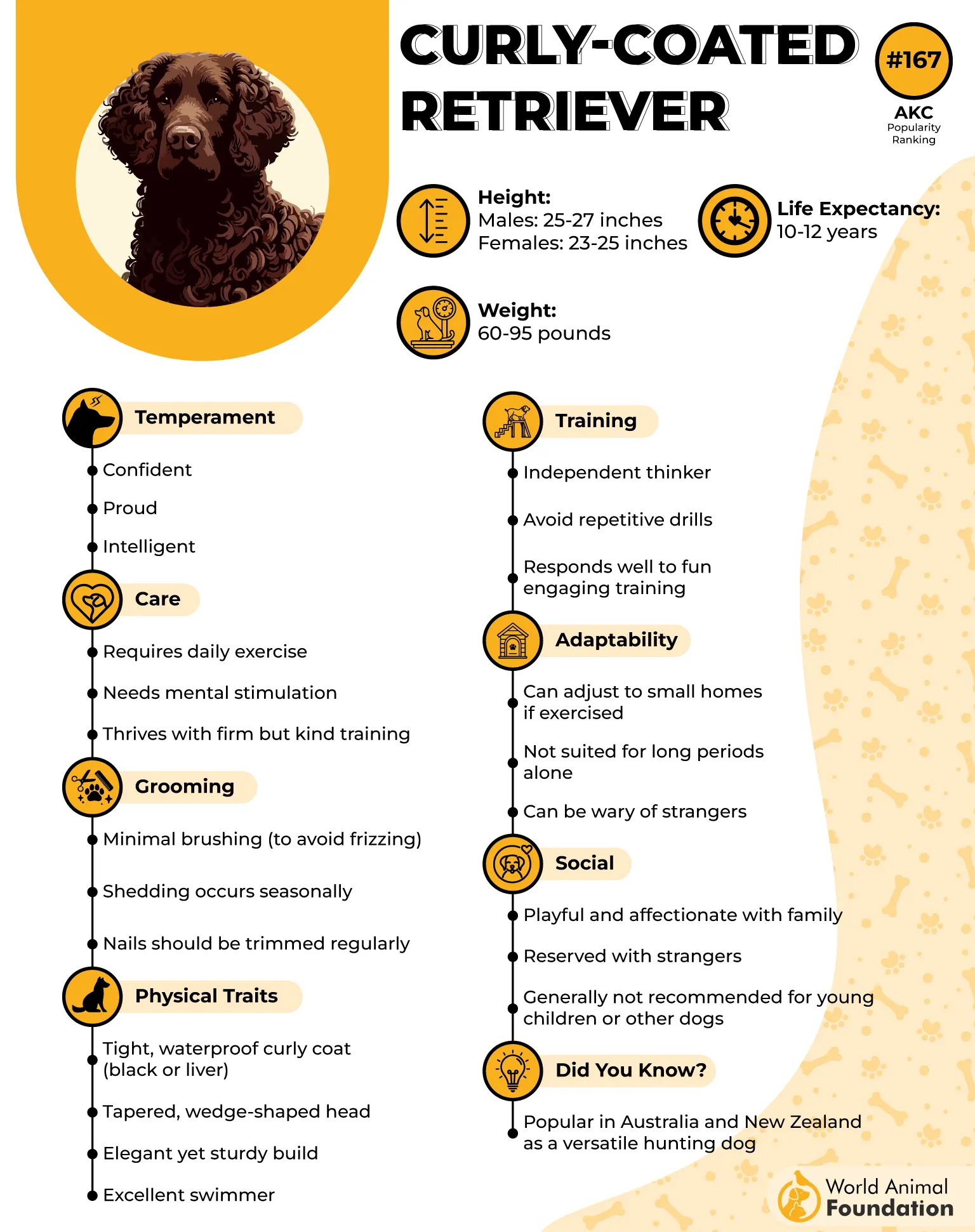
Despite their independence, they form strong bonds with their handlers. They prefer structured activities like agility, retrieving games, or dock diving. Boredom can lead to mischief, so keeping them occupied with interactive tasks is essential.
Their curly coat requires surprisingly little maintenance. Their fur does not mat easily, and occasional brushing suffices. Bathing should be infrequent to retain the coat’s natural texture. They shed minimally, making them easier to manage.
Health-wise, they are generally robust but prone to hip dysplasia and certain eye conditions. Regular vet check-ups and a balanced diet help maintain their well-being. Providing high-quality nutrition supports their energetic lifestyle and overall longevity.
Fun Fact
The Curly-Coated Retriever is one of the oldest retriever breeds and was once favored by English gamekeepers for its ability to retrieve game from both water and dense underbrush.
3. Flat-Coated Retriever
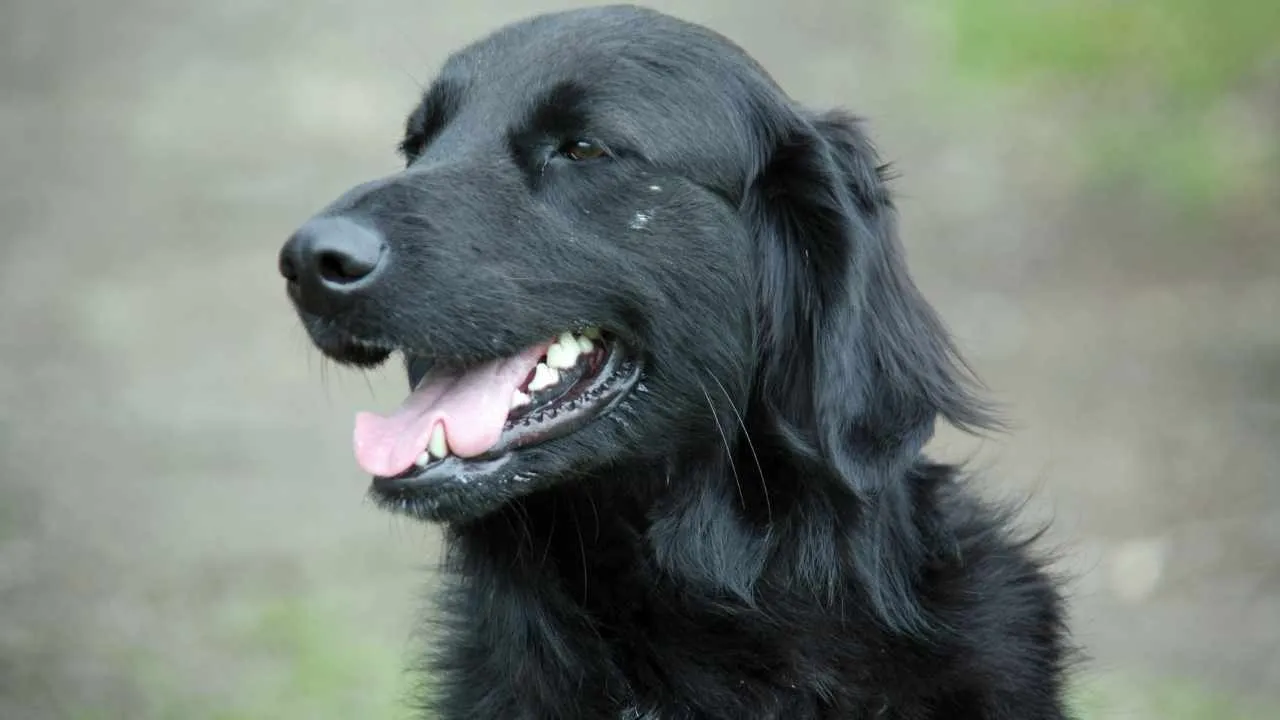
The Flat-Coated Retriever is a cheerful and energetic breed with a glossy black or liver-colored coat. Originally bred for retrieving in both water and land, it combines an athletic physique with an exuberant personality. Its enthusiasm remains puppy-like well into adulthood.
Known for their joyful attitude, they thrive in active households. Their high intelligence makes them eager learners, excelling in obedience and fieldwork. Early training should focus on impulse control, as their excitement can sometimes override discipline.

Exercise is a must, as they have boundless energy. Long hikes, swimming, and retrieving games keep them engaged. Without proper outlets, they may develop hyperactive tendencies. They do well in dog sports such as agility, flyball, and field trials.
Their luscious coat requires regular upkeep. Brushing two to three times a week prevents matting and keeps their fur glossy. Shedding occurs seasonally, so extra grooming is necessary during those periods. Regular ear checks help prevent infections.
As per PetMD, they are generally healthy but may be prone to cancer, a known concern in this breed. Routine veterinary visits, a nutritious diet, and maintaining an active lifestyle contribute to their longevity. A proactive approach to health monitoring is recommended.
Fun Fact
The Flat-Coated Retriever is often called the “Peter Pan” of retrievers because it retains its youthful and playful personality throughout its life, making it one of the most fun-loving retrievers.
4. Golden Retriever
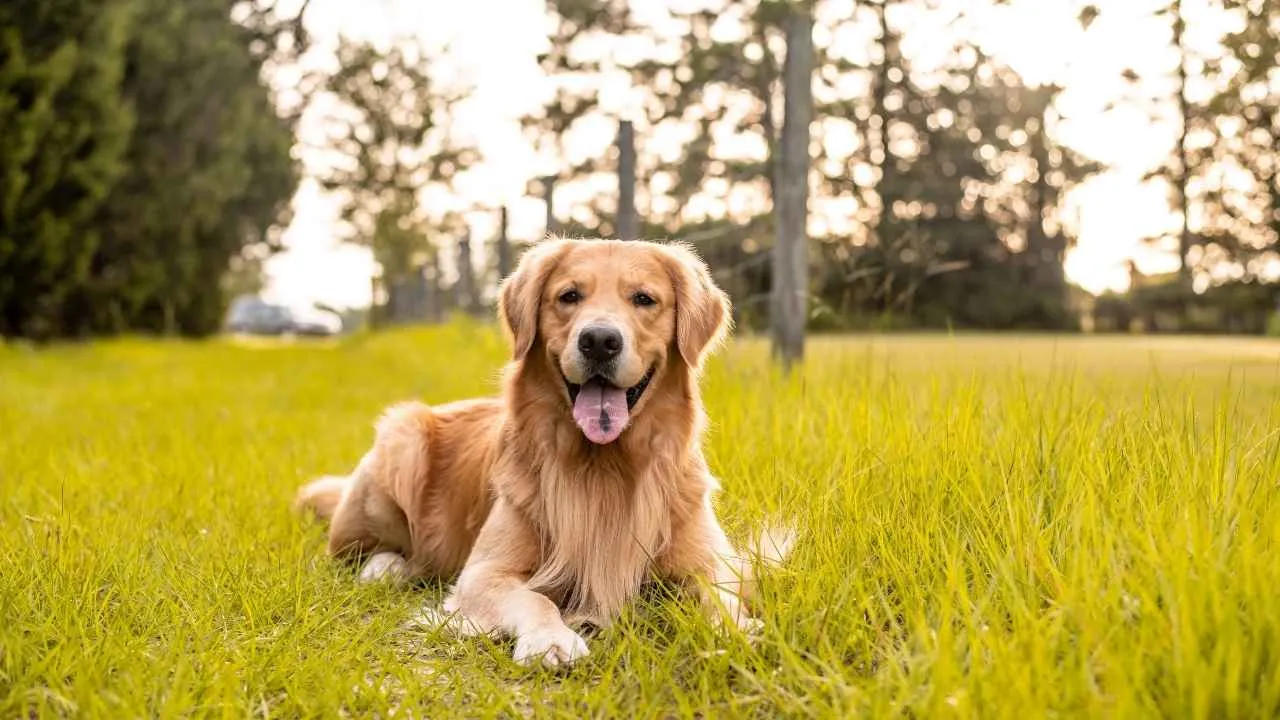
Golden Retrievers are known for their intelligence and adaptability, making them reliable working dogs in various fields. Their keen sense of smell, high trainability, and even temperament contribute to their success in search-and-rescue, detection work, and therapy settings.
These retrievers possess a thick double coat that requires consistent grooming. Their fur naturally repels water, making them excellent swimmers. Shedding occurs year-round, intensifying during seasonal changes. Regular brushing helps maintain coat health while reducing excessive loose hair around the home.
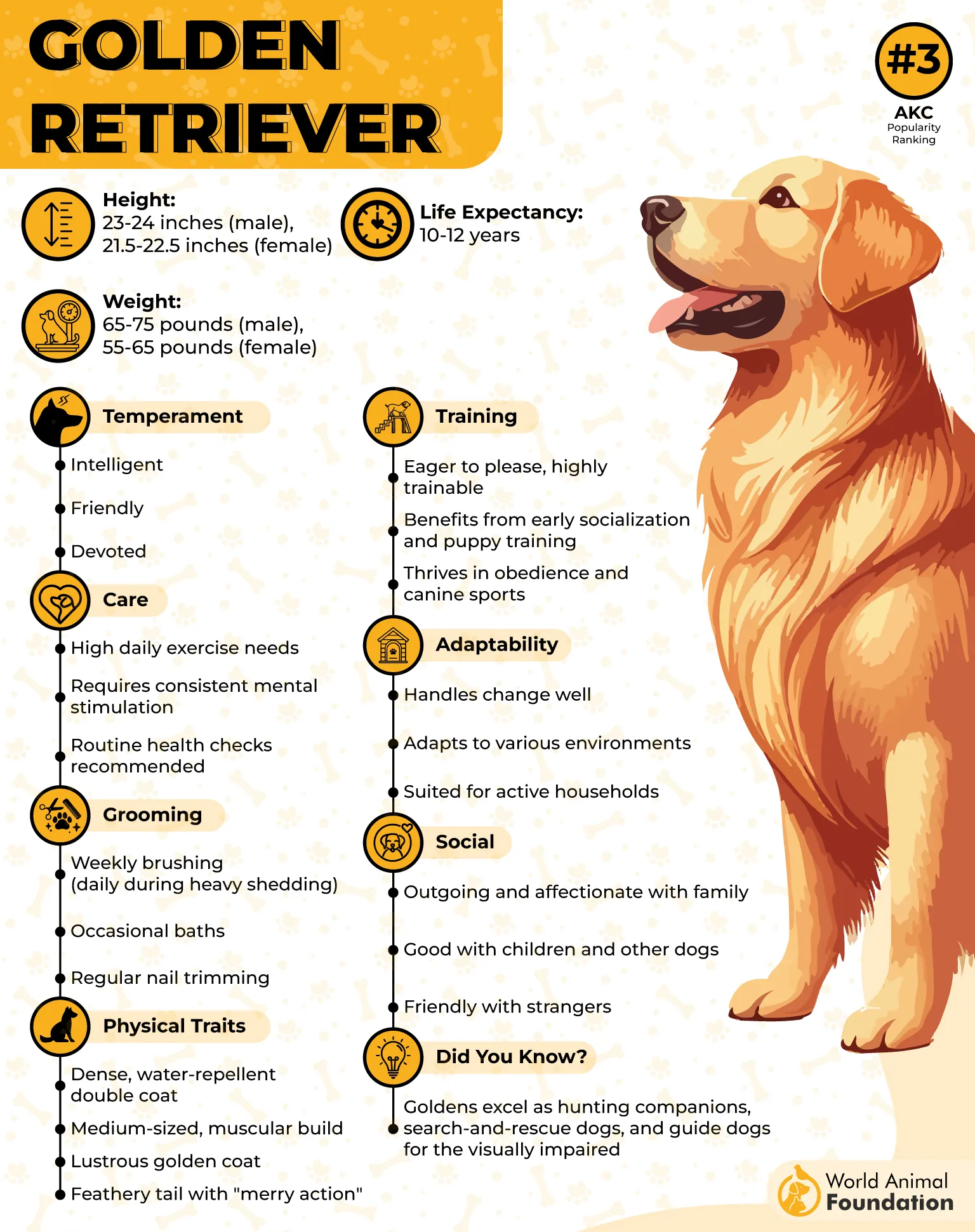
Golden Retrievers exhibit high energy levels, requiring daily exercise to stay fit. Long walks, interactive play, and swimming sessions help them burn off energy. Their enthusiasm for retrieving objects makes fetch ideal, fulfilling their instincts while keeping them engaged.
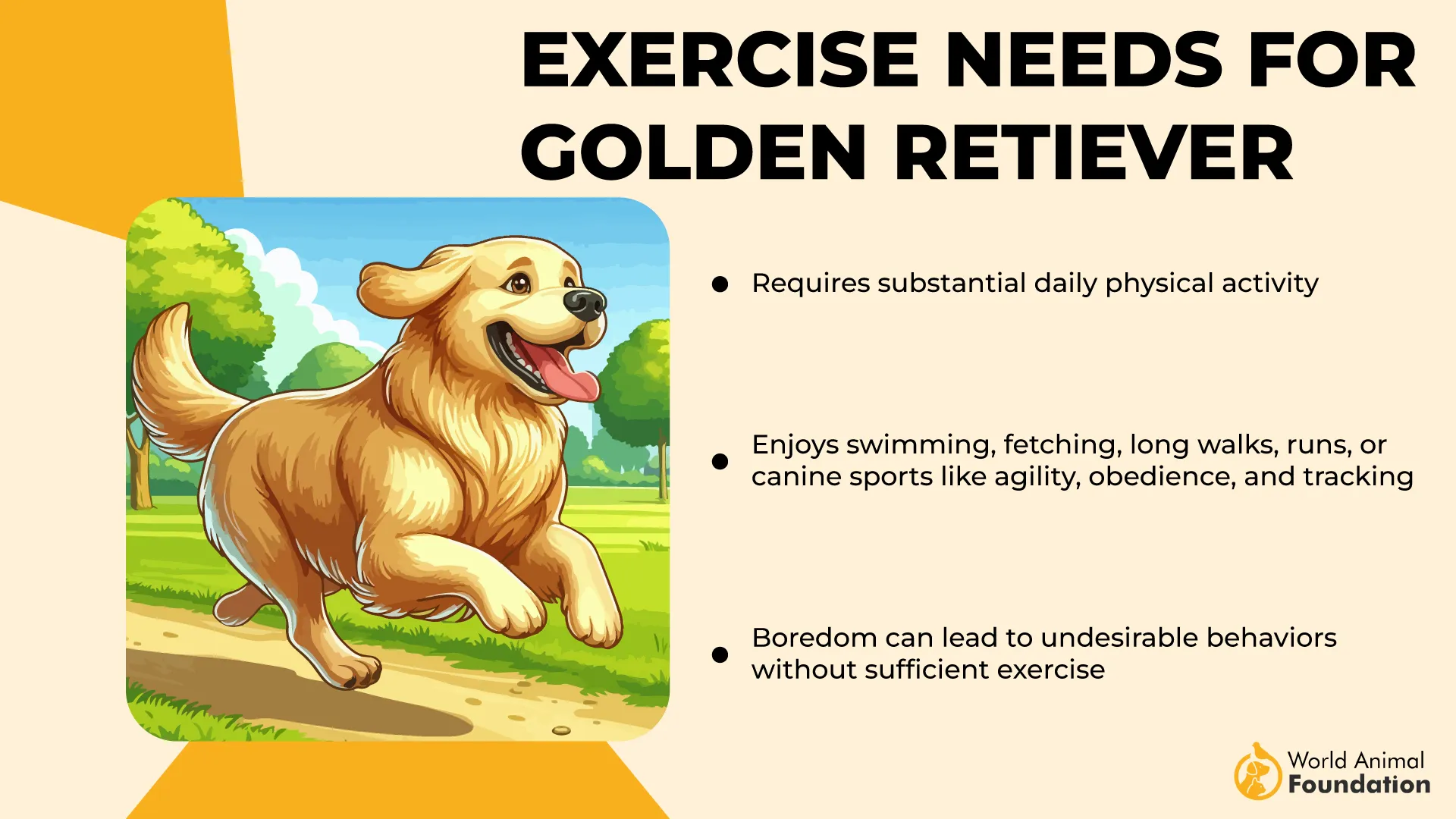
Their friendly demeanor extends to interactions with people and other animals. They thrive in social environments and respond well to structured training. Early socialization ensures they develop confidence in various settings, preventing nervous behaviors.
While generally robust, Golden Retrievers are prone to hip dysplasia and certain heart conditions. Regular veterinary checkups, a balanced diet, and joint-supporting supplements contribute to their overall well-being, ensuring a long and active life.
Fun Fact
Golden Retrievers were originally bred in Scotland for retrieving waterfowl. Their gentle mouths allow them to carry game without damaging it, a trait still evident when gently holding toys or objects without exerting pressure.
5. Labrador Retriever

Labrador Retrievers are highly versatile, excelling in various roles such as hunting, assistance work, and search-and-rescue operations. Their intelligence, eagerness to learn, and dependable nature make them one of the most widely utilized working breeds worldwide.
Purina states that their short, dense coat is water-resistant, enabling them to thrive in wet conditions. Their grooming needs are minimal, though regular brushing helps reduce shedding. They are known for their durability and ability to withstand different climates.
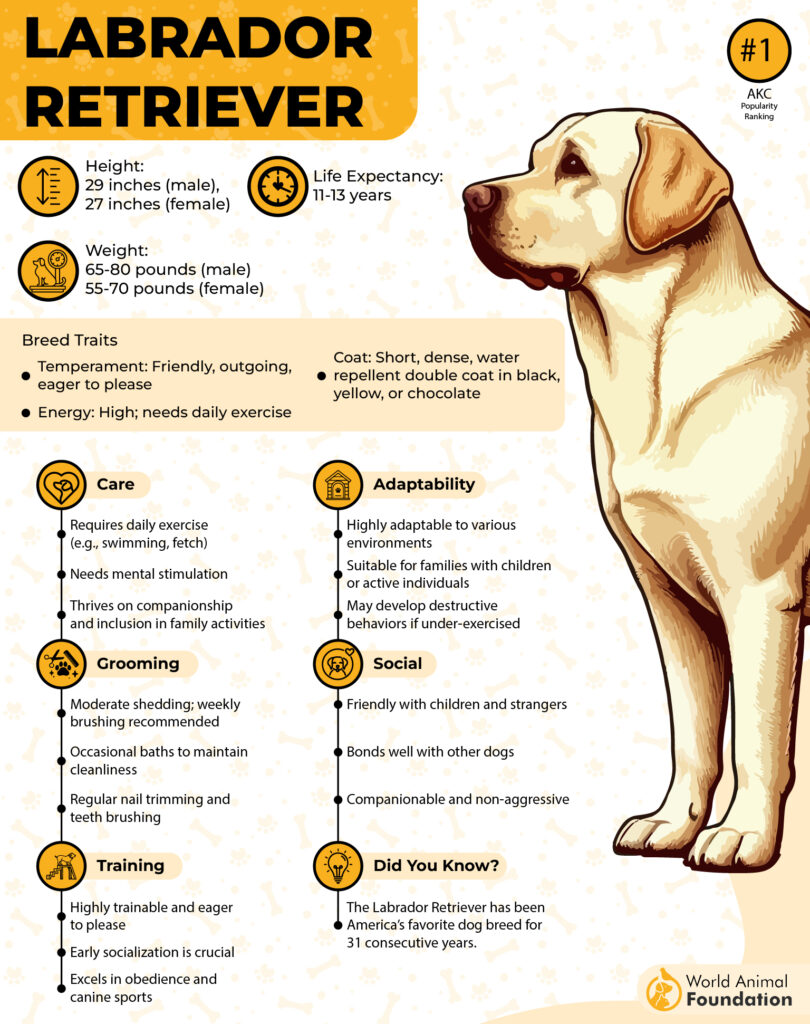
Labs possess a strong retrieving drive, originally bred to assist fishermen by retrieving nets and lost gear. Their powerful jaws can carry objects securely, making them efficient retrievers. This natural tendency enhances their ability in field trials and sporting events.
Their appetite is notoriously large, often leading to weight gain if not monitored. Maintaining a strict feeding schedule with measured portions is essential. Nutrient-rich meals supporting joint health are recommended to sustain their active lifestyle without unnecessary weight strain.
Despite their playful nature, Labrador Retrievers require consistent mental stimulation. Puzzle toys, obedience training, and interactive games prevent boredom, keeping their minds engaged. Without proper stimulation, they may develop destructive behaviors due to pent-up energy.
Fun Fact
Labrador Retrievers have webbed feet, enhancing their swimming capabilities. This adaptation allows them to paddle efficiently, making them one of the strongest canine swimmers. Originally used for retrieving waterfowl and assisting fishermen in cold waters.
6. Nova Scotia Duck Tolling Retriever
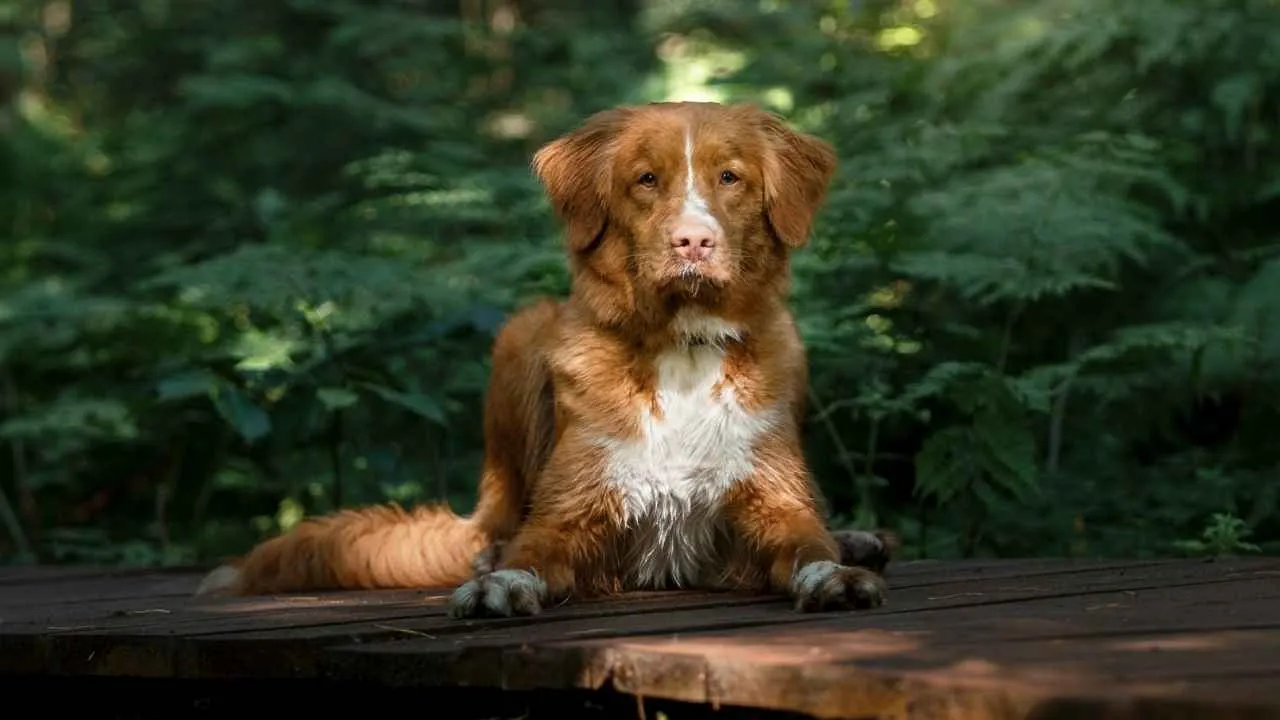
The Nova Scotia Duck Tolling Retriever is a highly skilled hunting breed designed to lure waterfowl into range. Their energetic and agile movements and distinctive red coats make them effective in drawing birds closer to hunters.
These retrievers possess a high-energy temperament requiring regular physical activity. Hiking, running, and agility training keep them engaged and satisfied. Their stamina makes them suitable for long outdoor adventures, thriving in environments that challenge their endurance.
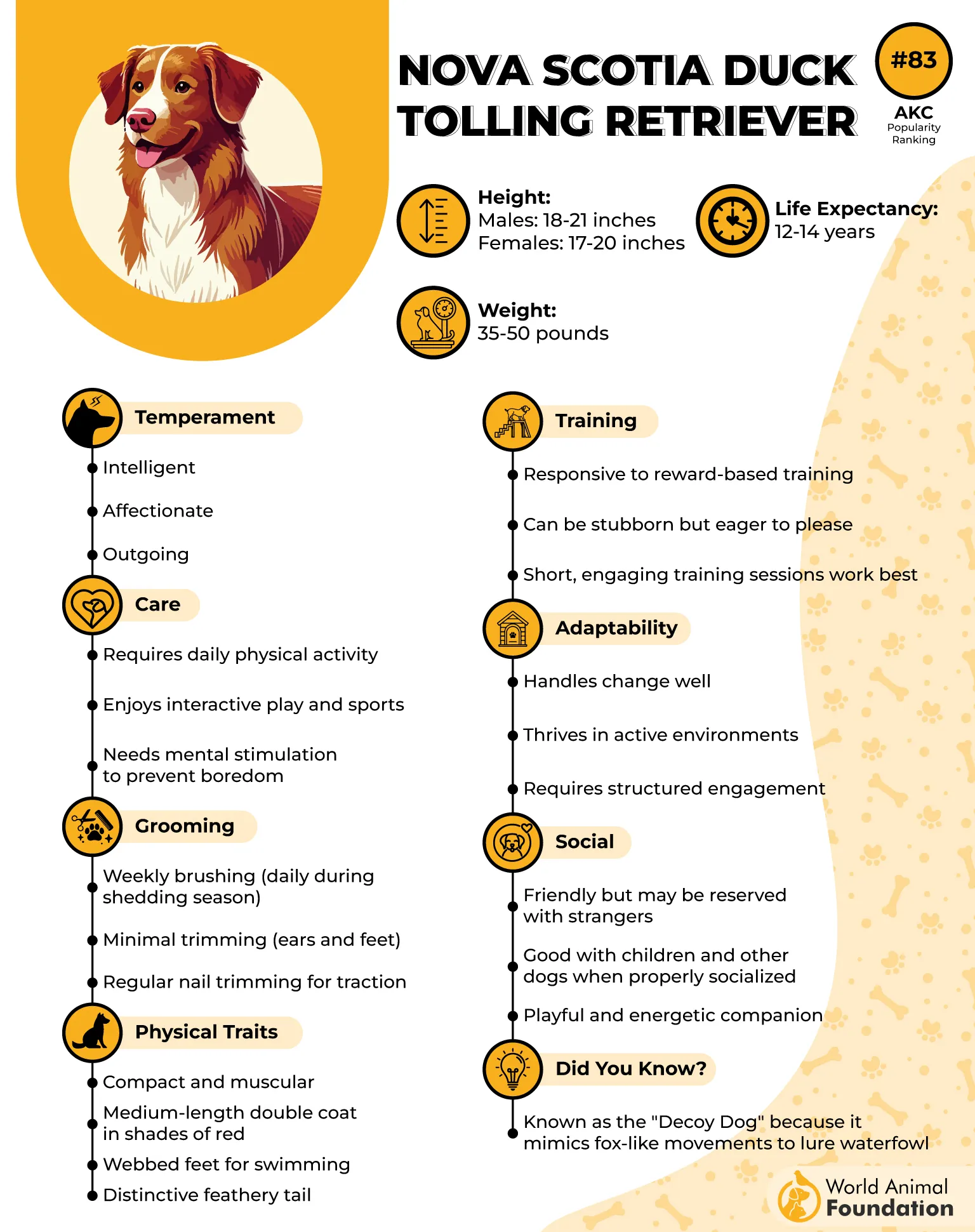
Their coat is naturally weather-resistant, offering protection in wet and cold conditions. Regular brushing helps manage shedding while maintaining its insulating properties. Bathing should be occasional to avoid stripping essential oils that keep their coat healthy.
Intelligence and problem-solving skills are defining traits of this breed. They respond well to structured training sessions that include positive reinforcement. Their ability to learn quickly makes them excel in obedience and performance-based activities.
Regular ear checks are essential to prone to ear infections due to their floppy ears. Keeping their ears dry and clean helps prevent bacterial growth. A balanced diet rich in omega fatty acids also supports their skin and coat health.
Fun Fact
The Nova Scotia Duck Tolling Retriever uses a unique hunting technique called “tolling.” By playing near the shoreline, they attract the curiosity of waterfowl, luring them within range, a skill that sets them apart from other retriever breeds.
Conclusion
Retriever breeds are among the most versatile and hardworking dogs. Their intelligence and eagerness to learn make them highly trainable, while their strong retrieving instincts allow them to excel in specialized tasks. Each breed offers unique strengths suited to different lifestyles.
Beyond their working abilities, retrievers are loyal and affectionate. Their energetic nature makes them great companions for active individuals, while their trainability allows them to thrive in structured environments. With proper care and stimulation, they develop into disciplined, well-rounded dogs.
Retrievers were originally bred for waterfowl hunting, using their intelligence and soft mouths to retrieve game without causing damage. While this guide covers six primary retriever breeds, other dogs that are skilled as hunting dogs, such as the American Golden Retriever and Canadian Golden Retriever, also excel in the field.
Choosing the right retriever means considering temperament, activity level, and grooming needs. When matched correctly, a retriever becomes a devoted companion, excelling in both work and daily life. Their combination of intelligence, loyalty, and drive makes them highly sought after.


